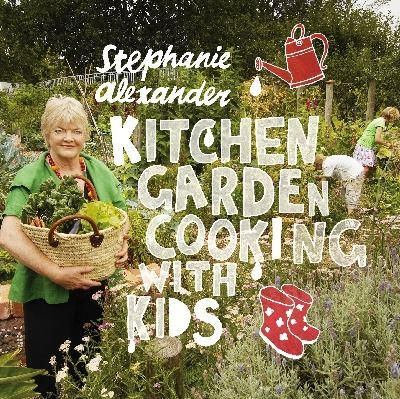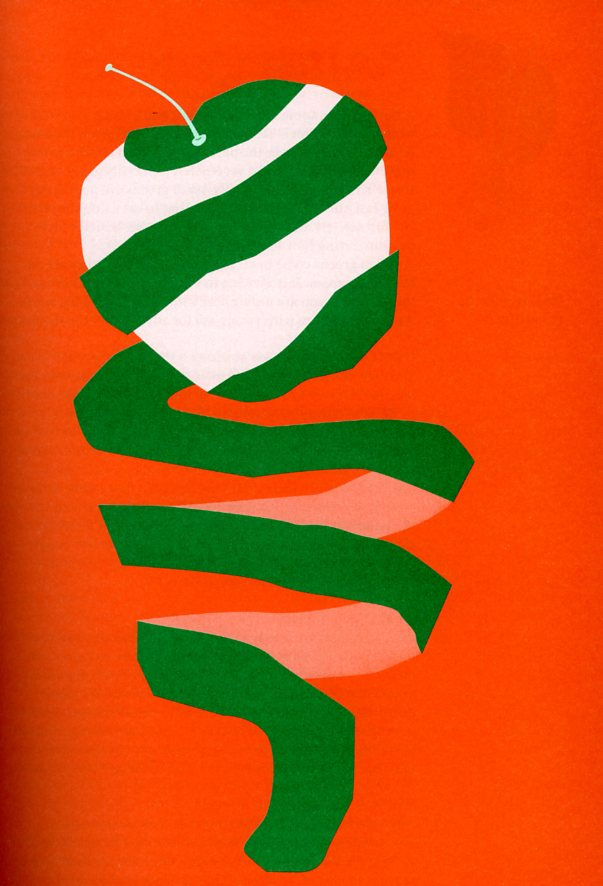Persuading the young to cook the Stephanie Alexander way
- rosemarydearman1
- May 2, 2019
- 7 min read

"I want there to be no mysteries." Stephanie Alexander
I have been meaning to write about this book for a while now. It has been sitting on my desk waiting for its moment in the sun. But I have found it to be curiously uninviting as a topic.
I came by it by accident. As Christmas approached I thought it was time to buy my grandchildren a serious, 'proper' cookbook and I remembered that Stephanie Alexander had written one as an accompaniment to her work in establishing kitchen gardens and cooking classes in schools. So I thought that I would buy it. Then Readings had a super special on The Cook's Apprentice, and so, thinking that this was the book she wrote for kids I bought copies for each family. I may even have bought three (one for me too). They were a super bargain.

Anyway, when I came to wrap them I realised that I had made a mistake. This was not the book for children. That was the one shown at right - Kitchen Garden Cooking with Kids.
Although.
I have to admit that although I have several of her books and have made several things from them - indeed some are my standard go to recipes - pesto and tzatziki being but two, I somehow do not feel inspired by her. I have even 'met' her in person at a book signing - one of my books is signed by her, and she has done many admirable things. The kitchen garden project is the most admirable of all and I can do nothing but praise her for it. Maybe it's not her - maybe it's her publishers, her agent, or some such, but it was really difficult to work out which of her books is the one meant for children. After much exploration on Readings and Amazon web sites, I am now pretty sure that it is the one shown above. However, the book is not exclusively directed at children. It's really directed at their teachers. A large proportion of the book is about the project itself. How it came to be, together with advice to schools as to how to set up the same program. There are indeed some recipes for children with lovely pictures and very clear instructions, but there are only 100 and so I suspect are just a small part of the book and really meant for the teachers to use. There is also The Kitchen Garden Companion, which is available either as an all-in-one volume or as two separate volumes - the first on Growing and the second on Cooking. The Cooking volume though is not directed specifically at children.
So no, she hasn't really written a book for kids. Maybe we should just stick to Jamie Oliver's advice and not treat children as different from adults. When speaking about one of his books - one of the 'easy' ones he said that parents should get their kids to choose a recipe from the book and then make it - once a week. He thought they could - and he should know as he has five or six children of his own. And I gather this is sort of what my granddaughters do. With a parent around to help if needed it should be perfectly possible to cook something from the myriad of recipe books these days that have the words, fast, fresh, simple, quick, easy in the title. But they need some kind of picture to be able to decide what to cook. A title alone will not do it.
So back to The Cook's Apprentice - my buying mistake. I think in the end I did pass them on to both families, or maybe I just gave it to the mothers and kept the other one for myself. You can never have too many cookbooks after all.
Having now read the introduction I realise my mistake. This book is aimed at the young - not children.
"Having reached out to the very young, I now want to pass on my enthusiasm, knowledge and passion to all of you young foodies. I see you in cafés and food stores and bakeries and know that you are adventurous and interested in eating well. But I hear that many of you do not feel super confident in the kitchen." Stephanie Alexander
She is certainly right to notice that the young spend a lot of time eating out - or ordering in food vie Uber, but they do not appear to cook. So all praise to her in attempting to teach them. But I reckon this is not the book to do it. Not because of the content per se, although the recipes are not particularly enticing. There is a lot of valuable stuff in here - lists of equipment, explanations of various ingredients and a very long list of techniques from 'acidulated water' to 'zesting citrus fruit' all of which are described in detail. These appear in one section at the beginning of the book, and if a recipe requires one of these techniques it is listed in the margin next to the recipe.
In addition each recipe has an introduction which might be a little bit of history, a tip, a trick, a warning about something, and there are variation suggestions at the end.
But there are no pictures. Now to me this is a major, major mistake. This is a visual generation. They spend their lives looking at, taking and sharing pictures. I have commented before about this - whether a picture is necessary or not, and there are definite pros and cons, but I reckon if you are trying to get the young of today to cook you are not going to do it with a plain vanilla book, however, well written. You need something to instantly attract, to grab their attention. A whole lot of grungy cartoons would be better than nothing. Something to attract anyway. It's not enough to just refer them to the odd video. Coles Magazine is more likely to pull them in. And no, I am not saying that Coles Magazine is something to aspire to - but it is easily available, it's free, it's colourful, it has useful tips and tricks and the food is reasonably interesting and rather more like what they are eating in their cafés. The Cook's Apprentice is rather more basic in its recipe choice.
To illustrate this let's take the first section. Let's do a first recipe exploration. This is one of those books arranged by ingredients, and as such, has doubtless poached a lot of content from her classic The Cook's Companion. Which I do think is probably one of those books that every cook should have in his or her collection. If all else fails you can probably find the answer to your particular problem in there.

In this book the first section is 'Apples' - not 'Abalone' as in The Cook's Companion. She is sticking to more 'ordinary' ingredients here. Anything even vaguely unusual - maple syrup for example - appears in a section called 'Ingredients' with a brief explanation of what it is and where you can find it. There are full page illustrations like the one on the left here and there throughout the book, although mostly each section just has a small illustration next to its title. It's a graphic designer dream I guess.
She gives her list of 'Apples go with' as in The Cook's Companion but it is much shorter and simpler - no brandy, calvados, duck or witlof here. There are fewer recipes too - which is fair enough - and no quick suggestions for interesting things like scorched apple or apple toast. Indeed one of her quick suggestions in The Cook's Companion - apple crumble - is a full-blown recipe here. Which I guess is also fair enough. The book is meant to be teaching basics after all.
And the first recipe - does it tempt me to explore further? Well no because it's bircher muesli - and I'm not a muesli fan. Well I like to sprinkle toasted muesli on fruit, but 'raw' muesli is definitely not my thing. On the side she suggests we refer to rolled oats as an ingredient and to 'Using a box grater' in techniques. And the other recipes - Apple Crumble, Quick Apple Cake and Baked Apples with Honey and Dried Fruit. Really good basic stuff that can be tweaked in so many ways, and I suppose containing techniques that are useful for a whole lot of other things. But let's remember she is talking to people who eat in trendy inner suburban cafés. I think the apple toast and the scorched apples would be more tempting to them.
I have perhaps been unfair because I flicked through the book a bit more, and all the standard café fare - stir fries, curries, smashed avocado, guacamole, falafel, slow cooked pork, pasta are there. But it sort of shows how you need to look further than the first recipe to get a true impression of what is there. Or should you have to? Isn't the job of the book to grab your attention and get you to explore further? How do you check out a potential buy of a cookery book. Are you going on the cook's reputation? Do you check the first recipe? Do you read the introduction? Do you flick through the book? If there are no pictures do you put it back on the shelf? I admit that these days I would be tempted to do that. I am now a sucker for pictures even though I think that, in many ways, having a picture is a bad thing. Your efforts may look different and you may then feel a failure. Or you may have envisaged something completely different to what it turns out to be.
Would I recommend it? Well no I don't think so. I think you would do better to convert the young to cooking with people like Jamie Oliver, Bill Granger, Curtis Stone, Donna Hay ... But what would I know? I'm not young.
"I am told over and over again by older Australians that they have no time to cook. I find this statement so depressing. My answer is that the pleasure of cooking and sharing is its own reward, and when it is a priority one can always find the time." Stephanie Alexander
And even there she refers to older Australians. Isn't she supposed to be talking to the young? Surely they are the ones with no time. So no - not for me - or maybe not even for her desired audience.












Comments